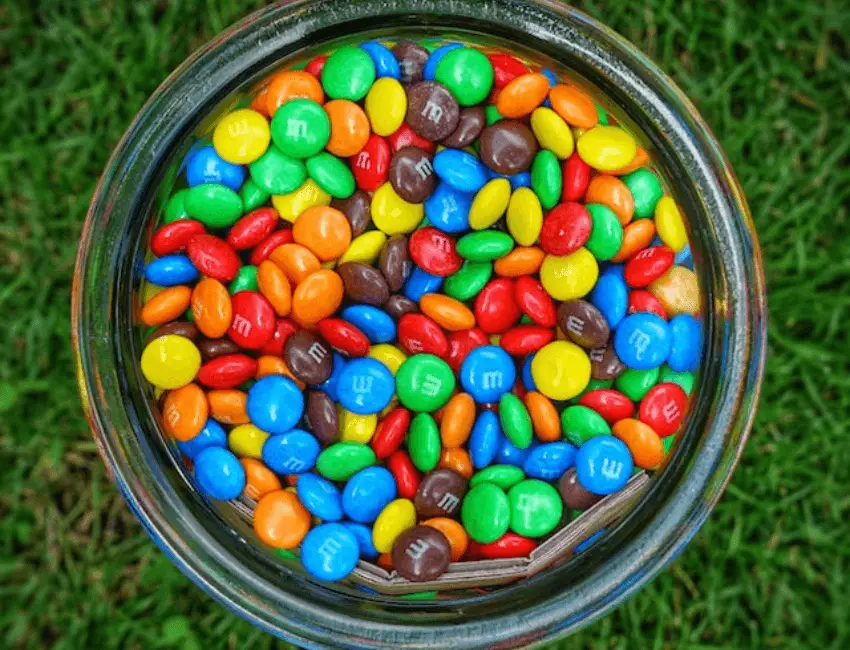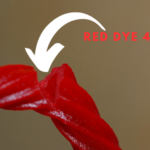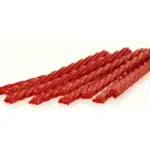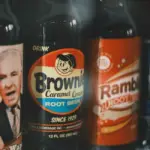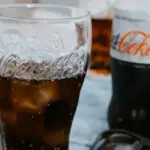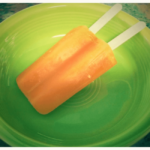If you’re someone who enjoys snacking on M&M’s, you may have wondered about the ingredients that are used to make them. One of the most common concerns that people have is whether they contain the controversial ingredient Red Dye 40
This article will inform you of what ingredients are in M&M’s and specifically if they contain any synthetic dyes such as Red 40.
Do M&M’s Contain Red Dye 40?
Yes, M&M’s have Red Dye 40 in them. This information applies to the U.S. market only. Coloring varies in different markets.
The table below shows many of the popular flavors of M&M’s and the dyes used in each product. Red 40 is used in all of the flavors that appear below.
Keep in mind that this list is not exhaustive. There are certainly additional flavors such seasonal varieties that do not appear below. However, it should be clear by the information that Red 40 is a common ingredient in U.S. M&M’s.
| M&M Flavor | Dyes |
|---|---|
| Milk Chocolate | Red 40, Blue 1 Lake, Yellow 6, Yellow 5, Blue 1, Yellow 6 Lake, Red 40 Lake, Yellow 5 Lake, Blue 2 Lake, Blue 2 |
| Peanut | Red 40, Blue 1 Lake, Yellow 6, Yellow 5, Blue 1, Red 40 Lake, Yellow 6 Lake, Yellow 5 Lake, Blue 2 Lake, Blue 2 |
| Peanut Butter | Red 40, Blue 1 Lake, Yellow 6, Yellow 5, Blue 1, Red 40 Lake, Yellow 6 Lake, Yellow 5 Lake, Blue 2 Lake, Blue 2 |
| Caramel | Red 40, Blue 1 Lake, Yellow 6, Yellow 5, Blue 1 |
| Fudge Brownie | Red 40, Blue 1 Lake, Yellow 6, Yellow 5, Blue 1 |
| Pretzel | Red 40, Blue 1 Lake, Yellow 6, Yellow 5, Blue 1, Yellow 6 Lake, Red 40 Lake, Yellow 5 Lake, Blue 2 Lake, Blue 2 |
| Almond | Red 40, Blue 1 Lake, Yellow 6, Yellow 5, Blue 1, Yellow 6 Lake, Red 40 Lake, Yellow 5 Lake, Blue 2 Lake, Blue 2 |
| Crunchy Cookie | Red 40, Blue 1 Lake, Yellow 6, Yellow 5, Blue 1 |
| Caramel Cold Brew | Red 40, Blue 1 Lake, Yellow 6, Yellow 5, Blue 1, Yellow 6 Lake, Red 40 Lake, Yellow 5 Lake, Blue 2 Lake, Blue 2 |
| Dark Chocolate Peanut | Red 40, Blue 1 Lake, Yellow 6, Yellow 5, Blue 1, Red 40 Lake, Yellow 6 Lake, Yellow 5 Lake, Blue 2 Lake, Blue 2 |
| Dark Chocolate Mint | Red 40, Yellow 5, Blue 1, Yellow 5 Lake, Blue 1 Lake, Yellow 6, Yellow 6 Lake, Red 40 Lake, Blue 2 Lake, Blue 2 |
| Dark Chocolate Espresso | Red 40, Yellow 6, Blue 2, Yellow 5, Blue 1, Red 40 Lake, Yellow 6 Lake, Blue 2 Lake, Yellow 5 Lake, Blue 1 Lake |
| White Chocolate Strawberry | Red 40, Yellow 5, Blue 1 |
You can verify if M&M’s candy has Red Dye 40 by reviewing its ingredients. Mars Incorporated, the manufacturer, is obligated by the U.S. Food and Drug Administration (FDA) to include the color additives utilized in the candy as a part of the ingredients list printed on the packaging. Read the ingredients on the actual product packaging for the most accurate ingredient information and rely on the label information to make buying decisions when ingredients are a concern for you.
The dyes used in M&M’s are regulated by the FDA and have been deemed safe for consumption by the agency. However, there are certainly potential concerns with synthetic color additives, particularly Red 40.
We suggest reading resources like Cleveland Clinic – Is Red Dye Safe? or Healthline – Food Dyes: Harmless or Harmful? for additional information on the safety of synthetic dyes.
SEE ALSO>>>Do Twizzlers Have Red Dye 40? (Answered)
Mars & Artificial Dyes
Mars made a commitment back in 2016 to eliminate artificial dyes from its food products within a five-year period. Despite this promise, the deadline has passed and artificial dyes still remain a common ingredient in many of Mars’ products, including M&M’s.
So, what happened?
Mars stated the following regarding the situation “we have found that consumer expectations regarding colors in food differ widely across markets and categories. This has motivated us to re-evaluate our global intent and seek to identify approaches that are more locally tailored to address these differences.” They go on to state, “For treats, however, we found that many of our consumers across the world do not, in fact, find artificial colors to be ingredients of concern,” (Source).
Mars essentially found that certain markets, such as the U.S., prefer the vibrant colors produced by artificial dyes over the duller colors produced via natural coloring. However, this has been met with some criticism. For example, The Center for Science in Public Interest argues the reason Mars removed artificial dyes from markets like Europe is because of stricter government regulation that involves warning labels for most dyed foods.
Sources:
•Best, Dean. “Mars Defends Colours Stance amid Criticism.” Just Food, 9 Feb. 2021, https://www.just-food.com/news/mars-defends-colours-stance-amid-criticism/.
•“Mars Fails to Fulfill Commitment to Remove Dyes from Its American Products, CSPI Says.” Center for Science in the Public Interest, 4 Feb. 2022, https://www.cspinet.org/news/mars-fails-fulfill-commitment-remove-dyes-its-american-products-cspi-says-20210203.

